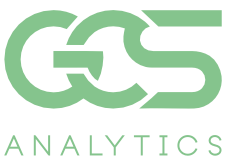
PEMS — a cost-efficient and modern alternative for continuous emissions monitoring
Predictive Emissions Monitoring Systems (PEMS) are software-analytical models that use automation data (DCS/PLC/SCADA/OPC) to predict concentrations and flows of pollutants in emissions. A properly implemented PEMS allows enterprises to reduce capital and operating costs, improve emissions management, and access real-time analytics.
With increasing attention to environmental protection and simultaneously high economic pressure on industrial companies, PEMS is becoming an attractive solution for large industrial facilities in Kazakhstan: CHP plants, boiler houses, metallurgical and chemical industries. This article provides a pragmatic overview: how PEMS works, when it is worth applying, what limitations should be considered, and a practical roadmap for implementation at Kazakhstani enterprises.
What is PEMS?
PEMS is a model (statistical, hybrid, or with machine learning elements) that uses measurements and signals from the control system: temperatures, flows, load, fuel composition, and other process parameters. Based on this input, the model calculates expected pollutant concentrations and flows (e.g., NOx, CO, SO₂, CO₂) in flue gases or other emissions.
PEMS is usually integrated with the industrial data system and tailored to specific stacks/sources. The model requires initial training on reference measurements and periodic validation of prediction quality.
Why PEMS is relevant for Kazakhstan
- CAPEX/OPEX savings. For enterprises where installing physical analyzers is costly (heat pipelines, maintenance, reagents), software monitoring provides significant savings.
- Faster deployment. While hardware systems require lengthy installation, PEMS can be implemented quickly and deliver results for process control.
- Integration flexibility. Industrial sites in Kazakhstan with modern DCS/SCADA systems can use PEMS as a tool for analytics and operational control without fully replacing existing infrastructure.
- Support for environmental programs. PEMS helps collect data for internal environmental management, emissions planning, and fuel consumption optimization.
Limitations and risks to consider
- Model operating range. PEMS accurately predicts only within the regimes it was trained on. Significant changes in technology, fuel, or emergency modes require additional validation.
- Data quality and availability. Reliable integration with DCS/PLC/OPC, accurate timestamps, and sampling frequency are critical for high-quality PEMS performance.
- Regulatory compliance. If PEMS is intended for official reporting to regulatory bodies, approval and accuracy verification are required. It is recommended to discuss requirements with local regulators in advance and include a validation plan in the project.
- Model interpretability. Some regulators and auditors prefer transparent models (hybrid or regression), whereas “black-box” ML models may raise additional questions.
Practical roadmap for implementation (adapted for Kazakhstan)
- Source classification. Divide stacks/sources by operational stability. Candidates for PEMS are stationary processes with predictable regimes (boilers, furnaces, CHP). Highly variable sources require an individual approach.
- Automation audit. Assess the availability and quality of signals in DCS/SCADA/OPC: measurement frequencies, timestamp synchronization, and key signals (temperature, flow, fuel composition, etc.).
- Pilot plan. Select 1–3 sources for a pilot project. The pilot should include collection of reference measurements (portable or laboratory analyzers) for model training and validation.
- Architecture and vendor selection. Decide whether to use an off-the-shelf PEMS solution with service support or to develop a hybrid model with a contractor. Consider transparency requirements and the possibility of local customization.
- Validation plan. Define test sets for accuracy verification (pre-validation, validation trials) and align reporting formats with regulatory bodies.
- Operational integration. Develop procedures for monitoring prediction quality, retraining models after equipment or fuel changes, and backup control strategies.
- Scaling. After a successful pilot, gradually expand to other sources with regular quality control.
Practical benefits for “GCS Analytics Kazakhstan” clients
A properly implemented PEMS provides:
Reduction of equipment and maintenance costs;
Fast access to real-time emissions data;
Opportunities for energy and process optimization;
Support for environmental reporting and internal compliance.
PEMS is a mature and cost-effective technology for many industrial facilities in Kazakhstan. When deciding, it is important to conduct a technical audit, pilot project, and regulatory coordination.
“GCS Analytics Kazakhstan” is ready to help — from automation audit and pilot preparation to full-scale implementation and PEMS support at your enterprise.
